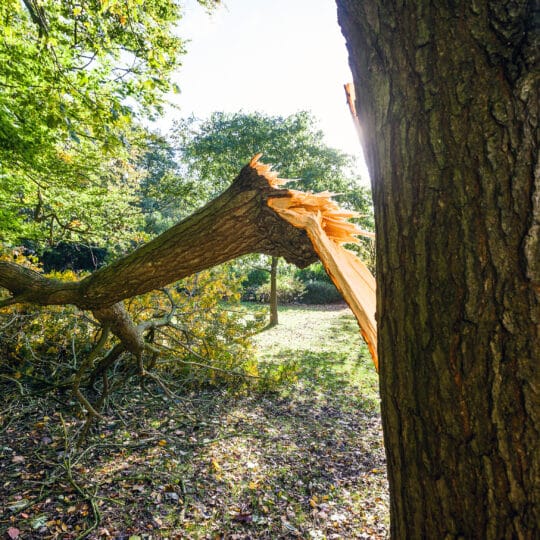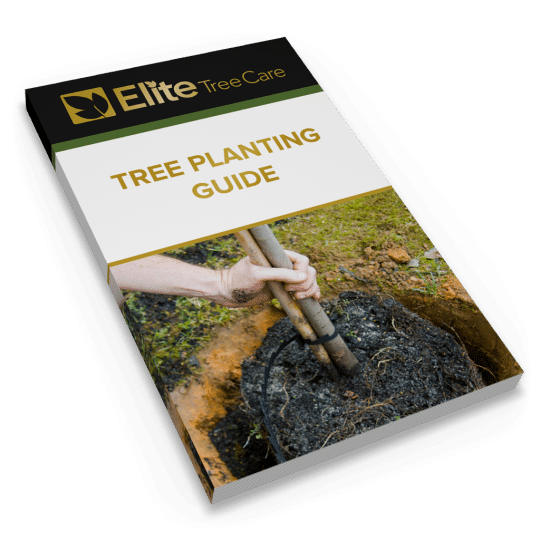Summer Storm Tree Damage
Prevention and Clean-Up
Posted
August 3, 2023

With summer comes storms. Even if you don’t live in an area that’s usually hit by hurricanes, your trees are still susceptible to damage from lightning, downpours, and high winds. Learn how you can help prevent summer storm tree damage and how to deal if it happens.
Preventing Summer Storm Tree Damage
From torrential downpours and whipping winds to lightning and hail, your tree can take a beating from summer storms. You may lose a few leaves, branches, limbs, or the whole tree. Typically a healthy tree is designed to stand up to harsh conditions, but even sturdy ones are no match for certain types of weather. All it takes is a bolt of lightning to strike a trunk and it’s never the same again.
Even if it looks like your tree has survived a storm, it may take years for you to notice any damage that’s done. That lightning strike, for instance, could have burned a hole in a section you can’t see. But now it’s more susceptible to pests and other diseases to take hold. Also, it may only seem like the tree has lost a few branches here and there. However, those were probably not clean breaks. A jagged edge or branch stump is also a hot spot for disease.
The best way to strengthen your tree and prevent it from further damage is to properly maintain it. Prune any broken or diseased sections. If you notice signs of pests or other weaknesses, get it evaluated by a professional sooner rather than later. It could mean the difference between your tree surviving the next storm or not.
Dealing with Storm Damage
After the storm rolls through, inspect your tree for any signs of damage. Make sure the area is safe, especially if there are also downed power lines. Take notice of anything that needs pruning. If you can reach it from the ground, it’s safe to prune the tree yourself. However, any damage you’d need a ladder to reach should be left for a professional to handle.
Pruning any torn sections is crucial to the future health of the tree. A clean cut can seal properly and help prevent rot. The larger the limb, the more difficult it will be to heal. If a structural limb is lost, there are some cable and bracing techniques that could help it recover. The sooner you start the healing process, the better.
Even if a tree seems healthy and stable, extreme conditions can cause it to come down. But the odds are still in the tree’s favor if you do what you can to help keep it strong and healthy.
If you have a tree that’s been damaged or you’re worried one may not make it through, contact Elite Tree Care for an evaluation so you can weather the next storm with peace of mind.

Download Your FREE Tree Planting Guide
Planting a tree is a cinch, as long as you are properly prepared. Get prepped to plant one tree or 100 with our straightforward guide.